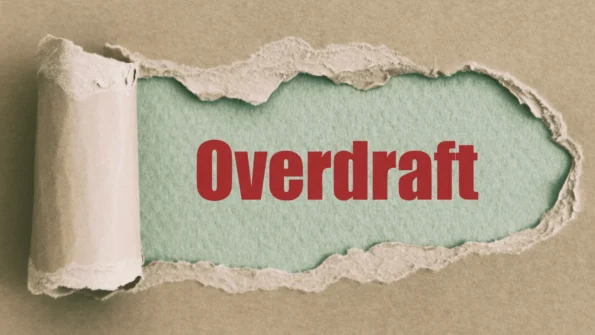When it comes to finances, you should always prepare for the unexpected. Emergencies can arise at any time, and without warning, you could need money to pay for a new car, a new furnace, a new refrigerator – the list goes on and on.
And when emergencies like these arise, it’s important that you have the funds available to you. Starting your own savings account for emergencies is the best thing you can do, but when money is tight, there are other options available to you. More specifically, we’re talking about overdrafts.
What is an Overdraft?
An overdraft is a type of protection that financial institutions offer. If you spend more money than what is in your bank account, overdraft protection can help you from sinking up to your neck in debt from interest fees. In this way, it helps you to manage your finances.
You can think of an overdraft like a small loan. It can help you to avoid declined transactions in stores, late charges on pre-authorized payments, and fees associated with non-sufficient funds.
It works like this; if you make a transaction but don’t have sufficient funds in your bank account to pay for it, an overdraft allows you to go into a negative balance. You can then pay off this balance the next time you add money to your account.
Overdraft interest is typically charged daily based on the amount of the overdraft balance. The interest rate is usually expressed as an annual percentage rate (APR), but the interest is calculated and charged on a daily basis.
For example, if you have an overdraft balance of $1,000 with an APR of 20%, the daily interest rate would be approximately 0.055%. This means that you would be charged approximately $0.55 in interest each day that the overdraft balance remains unpaid.
With overdraft protection, you can safely go into overdraft without worrying about fees. If you don’t have an overdraft, you will be charged fees and interest each time your account goes into the negative.
What is Overdraft Interest?
Overdraft interest is the interest charged on the money withdrawn in overdraft. Even if you have overdraft protection, you will be charged interest on your overdraft if it’s not paid back immediately. Overdraft rates will vary depending on which bank you are with but usually sit somewhere around 21% per annum.
The amount owing on your overdraft interest depends on your annual interest rate, your overdraft balance, and how long you’ve been in overdraft.
You can calculate your overdraft interest with the following calculation:
Overdraft interest = overdraft balance x annual interest rate + 365 (days in a year) x number of days you’ve been in overdraft.
Overdraft Interest Rates in Popular Canadian Banks
Sure, here’s a list of overdraft interest fees for some of the top Canadian banks (as of September 2021):
- Royal Bank of Canada (RBC): 22% annual interest rate on overdraft balances. No per-item overdraft fee.
- Toronto-Dominion Bank (TD Bank): 21% annual interest rate on overdraft balances. $5 per-item overdraft fee (up to a maximum of 5 fees per day).
- Bank of Montreal (BMO): 21% annual interest rate on overdraft balances. $5 per-item overdraft fee (up to a maximum of 7 fees per day).
- Scotiabank: 19% annual interest rate on overdraft balances. $5 per-item overdraft fee (up to a maximum of 5 fees per day).
- Canadian Imperial Bank of Commerce (CIBC): 21% annual interest rate on overdraft balances. $5 per-item overdraft fee (up to a maximum of 7 fees per day).
How Do I Avoid Overdraft Interest?
There are several ways to avoid overdraft interest:
- Keep track of your account balance: Make sure you know how much money you have in your account at all times. Keep a record of all your transactions and subtract them from your balance to get an accurate picture of how much money is available.
- Set up alerts: Many banks offer account alerts that can notify you when your balance falls below a certain level. You can set up alerts via email, text message, or push notification to your mobile device.
- Enroll in overdraft protection: Some banks offer overdraft protection services that can help you avoid overdraft interest. This may involve linking your checking account to a savings account, credit card, or line of credit. If your checking account balance falls below zero, funds will automatically be transferred from the linked account to cover the overdraft.
- Opt out of overdraft coverage: If you don’t want to pay overdraft interest or fees, you can opt out of overdraft coverage altogether. This means that your debit card will be declined if you try to make a purchase or withdraw money when your account balance is too low.
- Make a deposit: If you notice that your account balance is getting low, make a deposit as soon as possible to avoid overdraft interest or fees.
How Do I Make an Overdraft Payment?
When you make a payment on a loan like a credit card, you choose how much you want to pay and when. But overdrafts work a little differently. Instead of choosing how much you want to pay, your overdraft is paid down each time you deposit money into your bank account.
To help you understand better, let’s use an example. Let’s say you are overdraft $150. That means that you are -$150 in your bank account and owe that money to your financial institution.
Now let’s say you deposit $150 into your bank. This will pay your overdraft, and you will now have a balance of $0. If you were to deposit more, let’s say $300, you would now have a positive balance of $150 in your bank ($300 deposit – $150 owing).
What happens if I don’t have Overdraft Protection?
If you don’t have overdraft protection on your account, you may be denied when making transactions. Not only can this be embarrassing, but it may mean that you can’t buy your groceries or other necessities for the week. It may also mean that your bill payments may be denied, which can put you in debt and affect your credit.
In some cases, your financial institution may still allow you to go into overdraft even without overdraft protection. If this happens, you will be charged a hefty fee.
If this is your first time going into overdraft or there are special circumstances as to why this happened, your institution may be kind enough to cover the fees for you. But if this happens regularly, fees can add up quickly, and it would be wise for you to invest in overdraft protection.
In conclusion, overdraft protection can provide you with extra funds if you are running low or need some extra help. Overdraft interest is the interest associated with going into an overdraft. These fees can be high, so it’s important that you avoid going into overdraft whenever possible and pay it off as soon as possible if you do.












